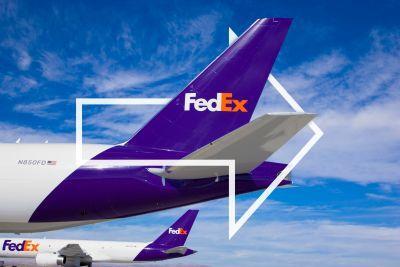Sun, Nov 23, 2025
Chicago and Miami Join Los Angeles in the Cargo Carrier’s Push for Sustainability
FedEx is quickly expanding its use of sustainable aviation fuel, marking Chicago-O’Hare and Miami International Airports as second and third on its list of US hubs receiving blended SAF. The company began deliveries at both airports in October, just six months after its first major deployment at Los Angeles International Airport.

At Chicago-O’Hare (ORD), FedEx is taking on a blend that includes one million gallons of neat SAF at a minimum 30 percent mix provided by Air bp. The company became the first all-cargo airline in the country to purchase and use SAF at the airport, helped along by the region’s “Existing fuel infrastructure and enabling policy conditions at the state level,” explained Karen Blanks Ellis, FedEx’s Chief Sustainability Officer and Vice President of Environmental Affairs. Miami comes with a larger volume: roughly three million gallons of blended SAF from AEG, also at a minimum 30 percent concentration.
The move builds on FedEx’s May agreement with Neste, which secured more than three million gallons of blended SAF for operations at LAX. That deal remains the largest SAF purchase by a US cargo airline at the airport, covering about a fifth of FedEx’s annual jet fuel use there.

FedEx can try to scale SAF use as much as it wants… but the problem remains that there simply isn’t enough production to match. However, early signs of increased output have encouraged the company to lock in more agreements. The carrier is working toward a 2040 carbon-neutral operations goal backed by $2 billion in sustainability spending. That plan is heavily reliant on several pieces aligning, including aircraft efficiency improvements, engine-out taxi procedures, electric delivery vehicles, and, increasingly, fuel substitution.
The company says its fuel-efficiency efforts saved 140 million gallons of jet fuel in 2024 and helped it surpass a 30 percent reduction in aircraft emissions intensity compared to 2005 levels. The next target is a 40 percent reduction by 2034, plus a broader goal to source 30 percent of its total fuel from alternatives, including SAF, by 2030.
More News
Option Approach An approach requested and conducted by a pilot which will result in either a touch-and-go, missed approach, low approach, stop-and-go, or full stop landing. Pilots >[...]
"Emirates is already the world's largest Boeing 777 operator, and we are expanding our commitment to the program today with additional orders for 65 Boeing 777-9s. This is a long-t>[...]
(Pilot) Reported That There Was A Sudden And Violent Vibration Throughout The Airplane That Lasted Several Seconds Analysis: The pilot was returning to his home airport at an altit>[...]
“This recognition was evident during the TBMOPA Annual Convention, where owners and operators clearly expressed their satisfaction with our focus on customer service, and enc>[...]
Overhead Maneuver A series of predetermined maneuvers prescribed for aircraft (often in formation) for entry into the visual flight rules (VFR) traffic pattern and to proceed to a >[...]
 ANN's Daily Aero-Term (11.19.25): Option Approach
ANN's Daily Aero-Term (11.19.25): Option Approach Aero-News: Quote of the Day (11.19.25)
Aero-News: Quote of the Day (11.19.25) NTSB Final Report: Sting Sport TL-2000
NTSB Final Report: Sting Sport TL-2000 Aero-News: Quote of the Day (11.20.25)
Aero-News: Quote of the Day (11.20.25) ANN's Daily Aero-Term (11.20.25): Overhead Maneuver
ANN's Daily Aero-Term (11.20.25): Overhead Maneuver




